Lowcountry Camping Along the South Carolina and Georgia Coast, part 2
Marsh ecosystems may not have the grandeur of a coastline lined with cliffs and thundering waves, but the quiet beauty of these places is uniquely restorative.
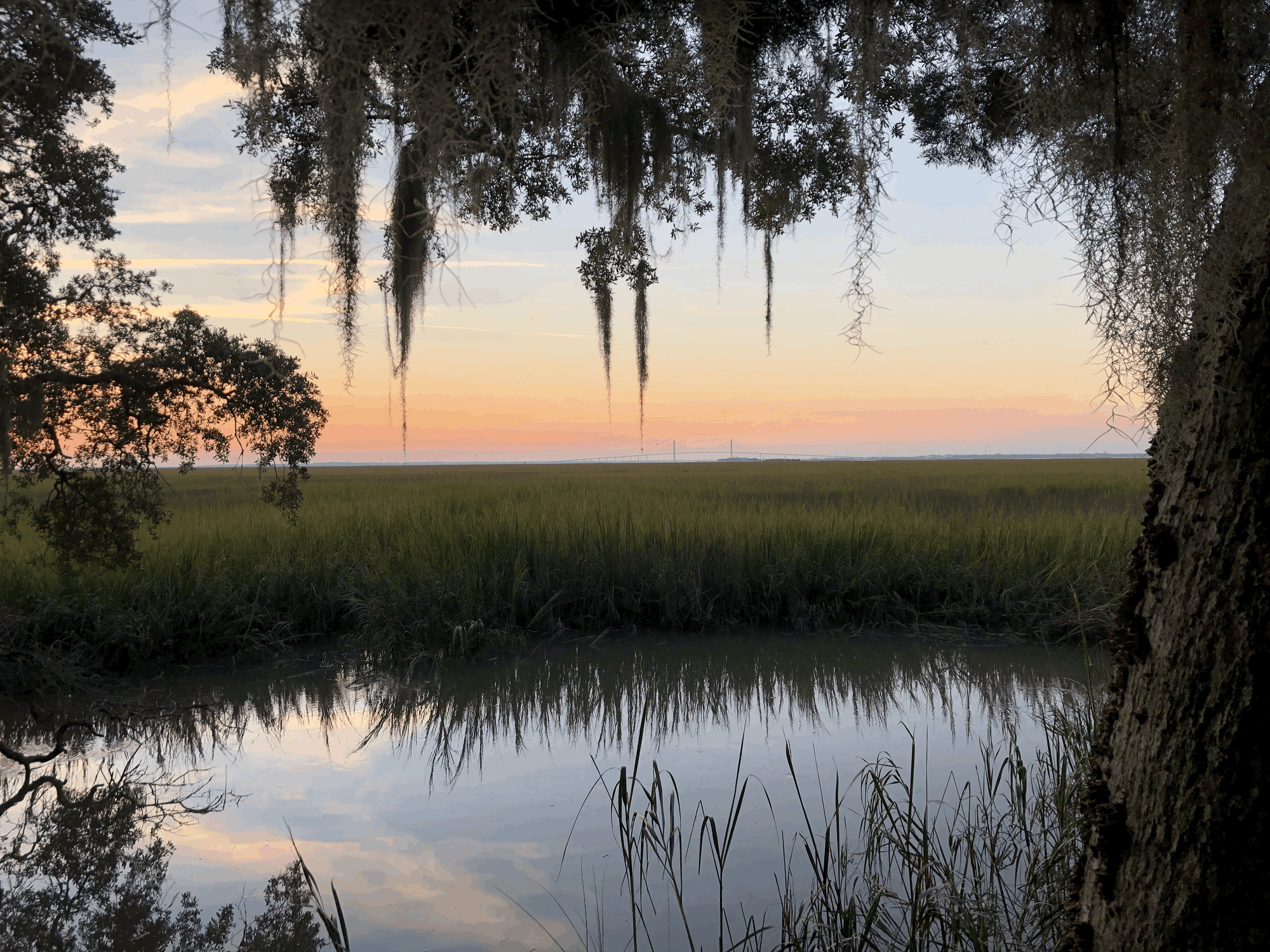
Visiting the South Carolina Lowcountry and the coast of Georgia has profound rewards. In part 1 of this article, I shared three places I'd recommend camping if you want to visit the Lowcountry in South Carolina. Now, I'll share three more campgrounds--Skidaway Island State Park, Jekyll Island Campground and Cumberland Island National Seashore--all in Georgia. Like South Carolina, Georgia's coast is backed by extensive saltwater marshes.
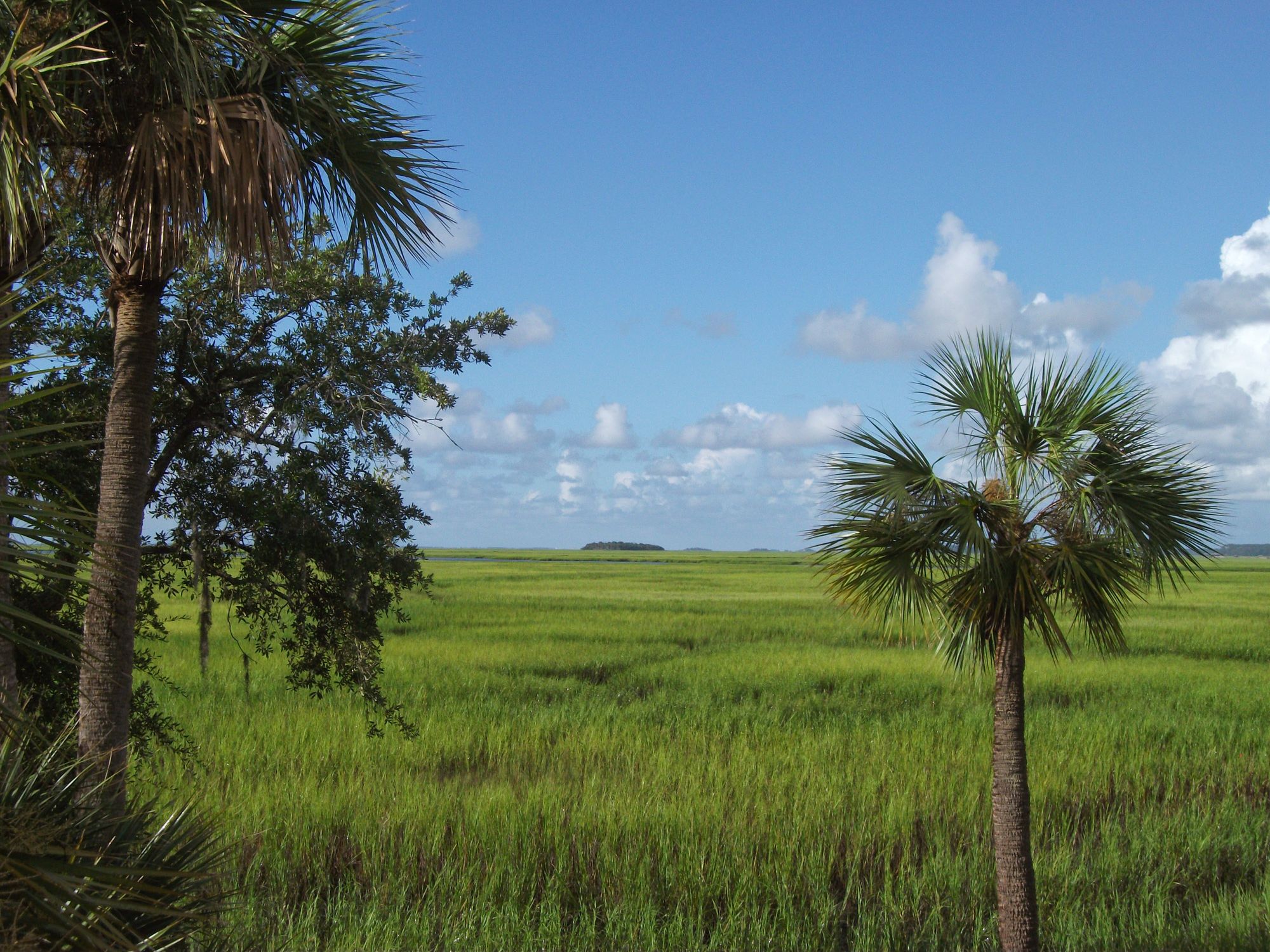
Marsh ecosystems may not have the grandeur of a coastline lined with cliffs and thundering waves, but the quiet beauty of these places is uniquely restorative. I admit that the marshes may be an acquired taste. After spending a week on the Georgia coast with me, my late mother said she'd seen enough marsh to last a lifetime. Less than a week after we returned to Atlanta, though, she turned to me and said, "I need to go back to the marsh." That's how I always feel now too. More and more I find myself thinking, "I need to go back to the marsh."
One place I love to go when I need to go back to the marsh is Skidaway Island State Park. Although it's not a huge park, it is a great place to see nature up close, and it provides a good base for more urban exploration in Savannah, too. There are six miles of trails through marsh and forest habitats within the park. Kayaking is a great way to see the marsh environment and while the park doesn't have it's own boatramp, there are numerous boat ramps in the area--including one just outside the park at Butterbean Beach.
Skidaway has a gorgeous campground. Campsites here range from $54 a night for full hookups to $46 a night for basic electric and water sites.
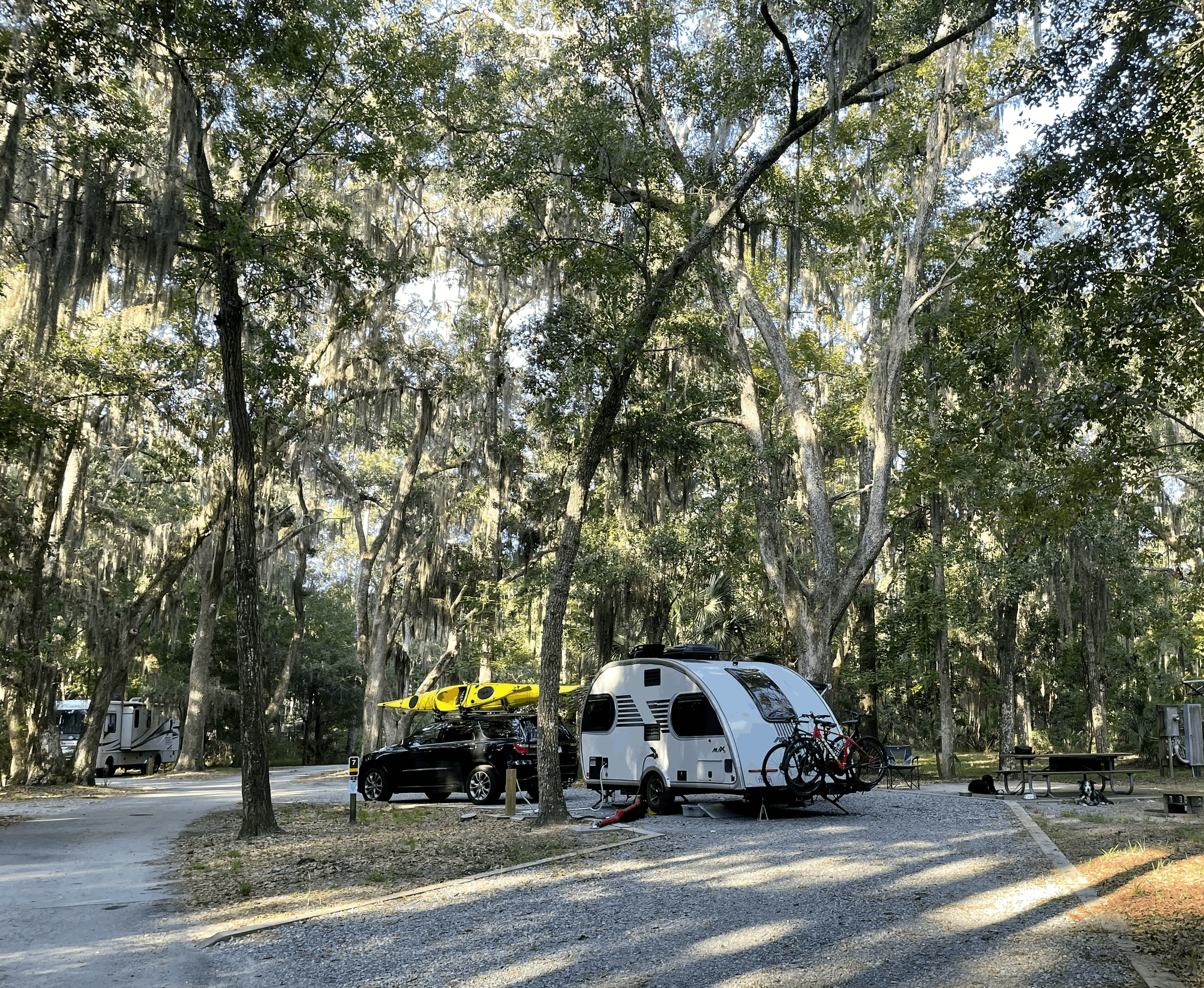
It's only a fifteen-mile drive from the park into the heart of Savannah. Although Savannah has the largest historic landmark district in the country, it is quite possible see this part of the city on foot. You only have to find a spot to park once! Savannah is a great place to visit an art museum, take a tour to learn about history or just relax with a drink in a bar or restaurant that may or may not be haunted.
Like Charleston, Savannah is packed with amazing restaurants. In the heart of the historic district we like to grab a bite at The Fox and Fig Cafe. Our favorite place to eat, though, is The Wyld. While not in the historic district, it's worth the short drive from downtown to enjoy a meal and a cocktail while soaking in the warm marsh landscape all around you.
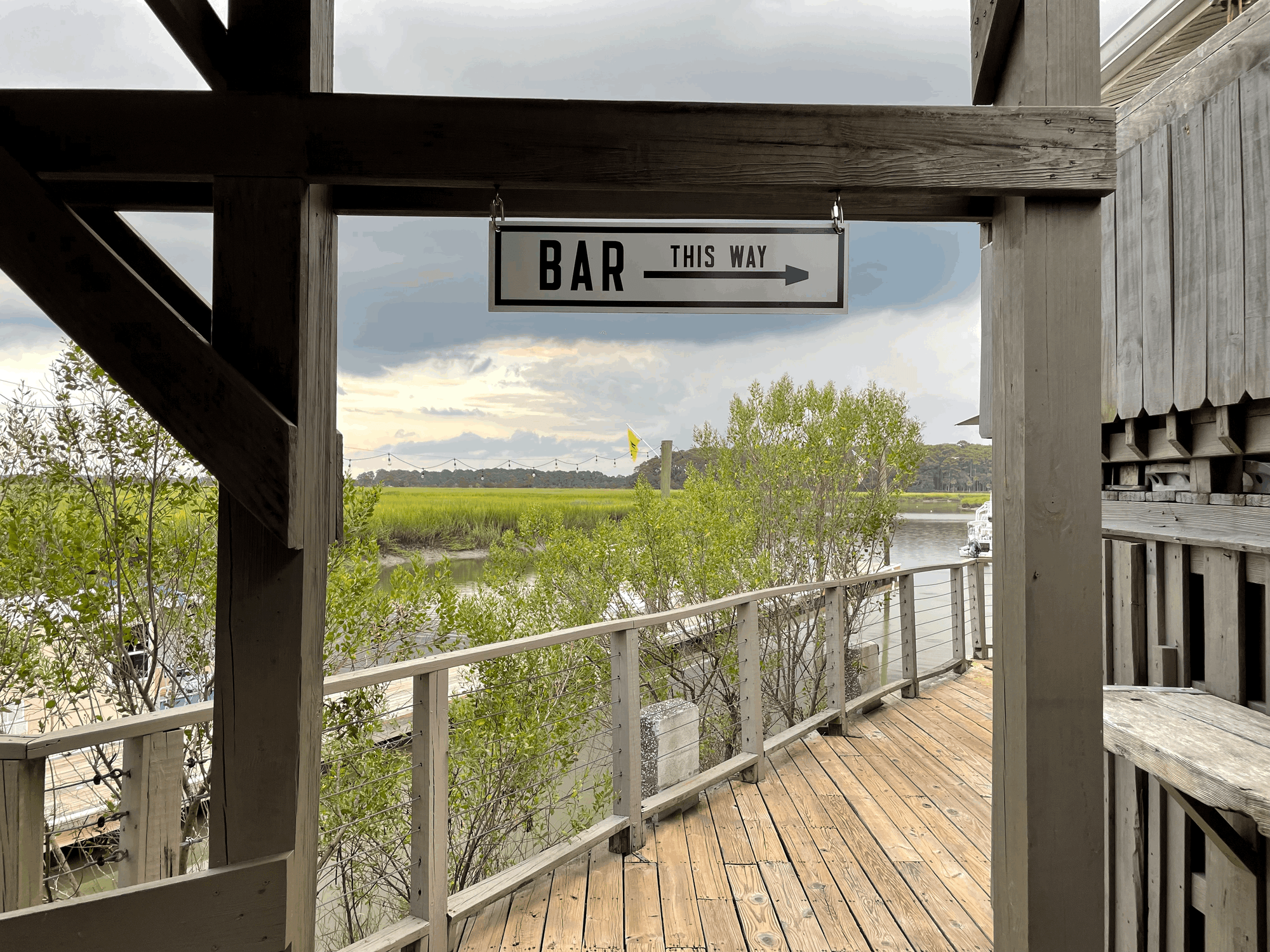
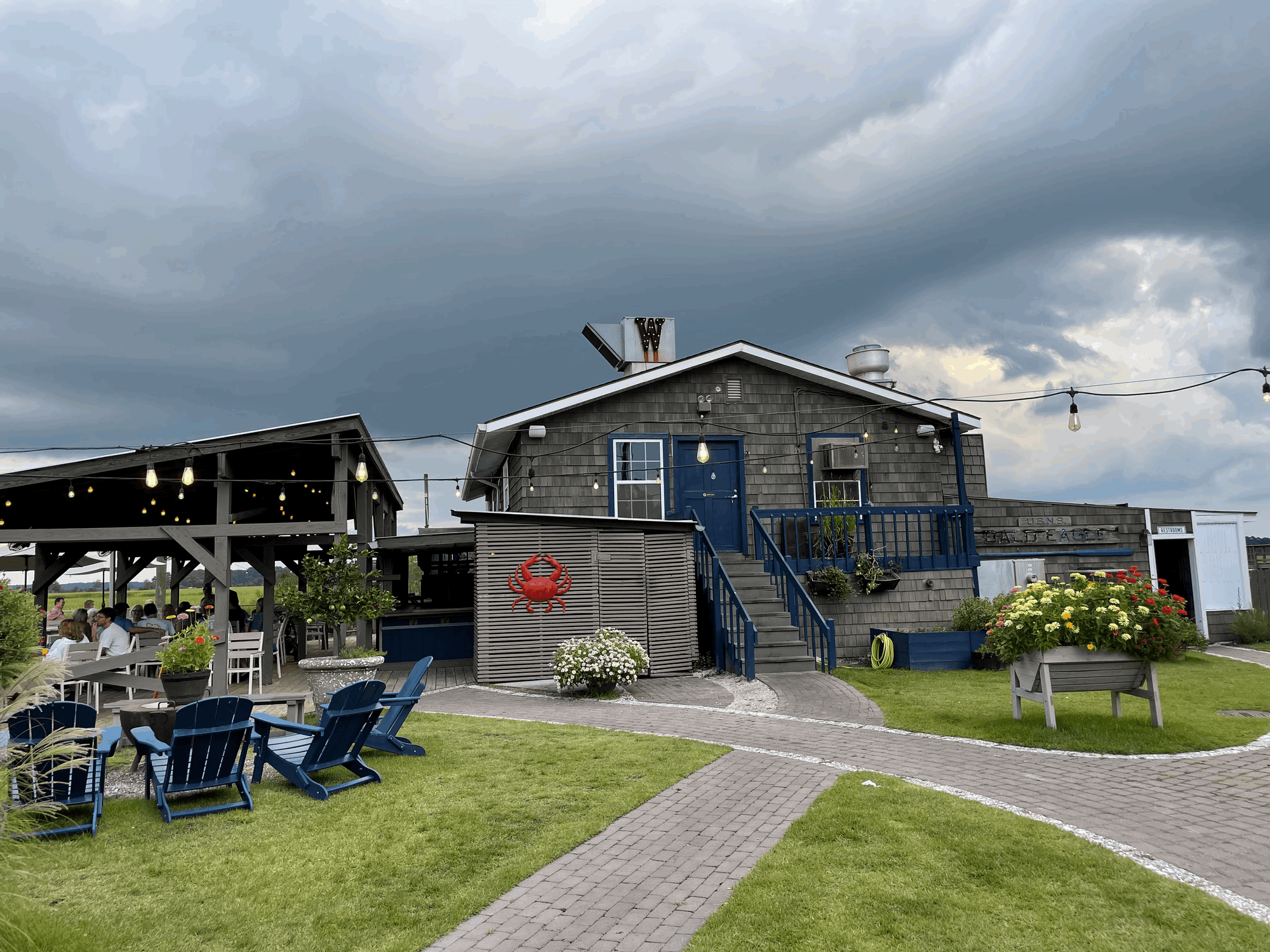
The Pin Point Heritage Museum, just five minutes from Skidaway is an interesting museum dedicated to explaining the Gullah/Geechee culture. The story of this community and its dependence on the riches of the marshes provides a deeper understanding of this unique culture. I really enjoyed visiting here, and I'd recommend spending an hour or two here if you are in the area.
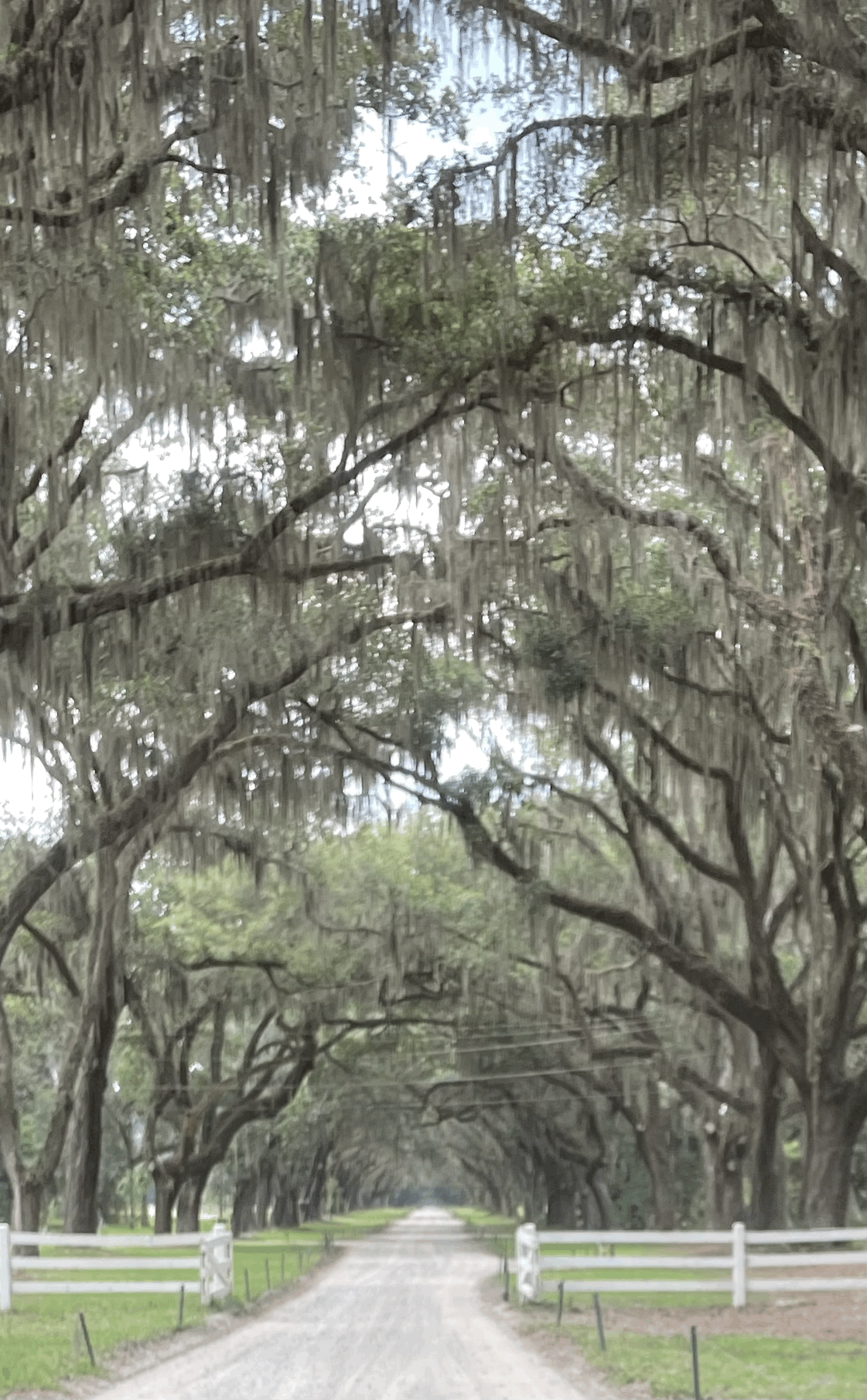
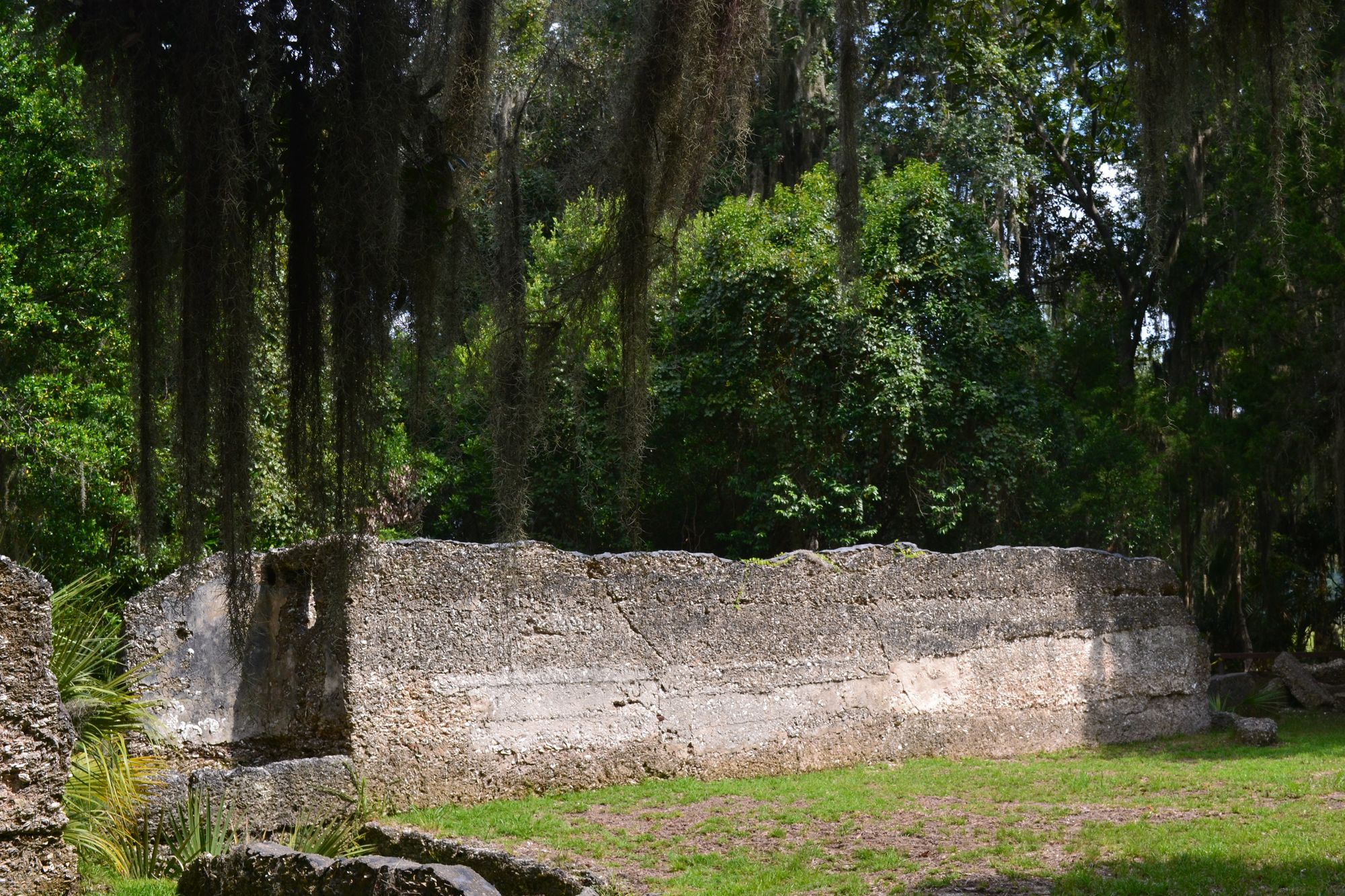
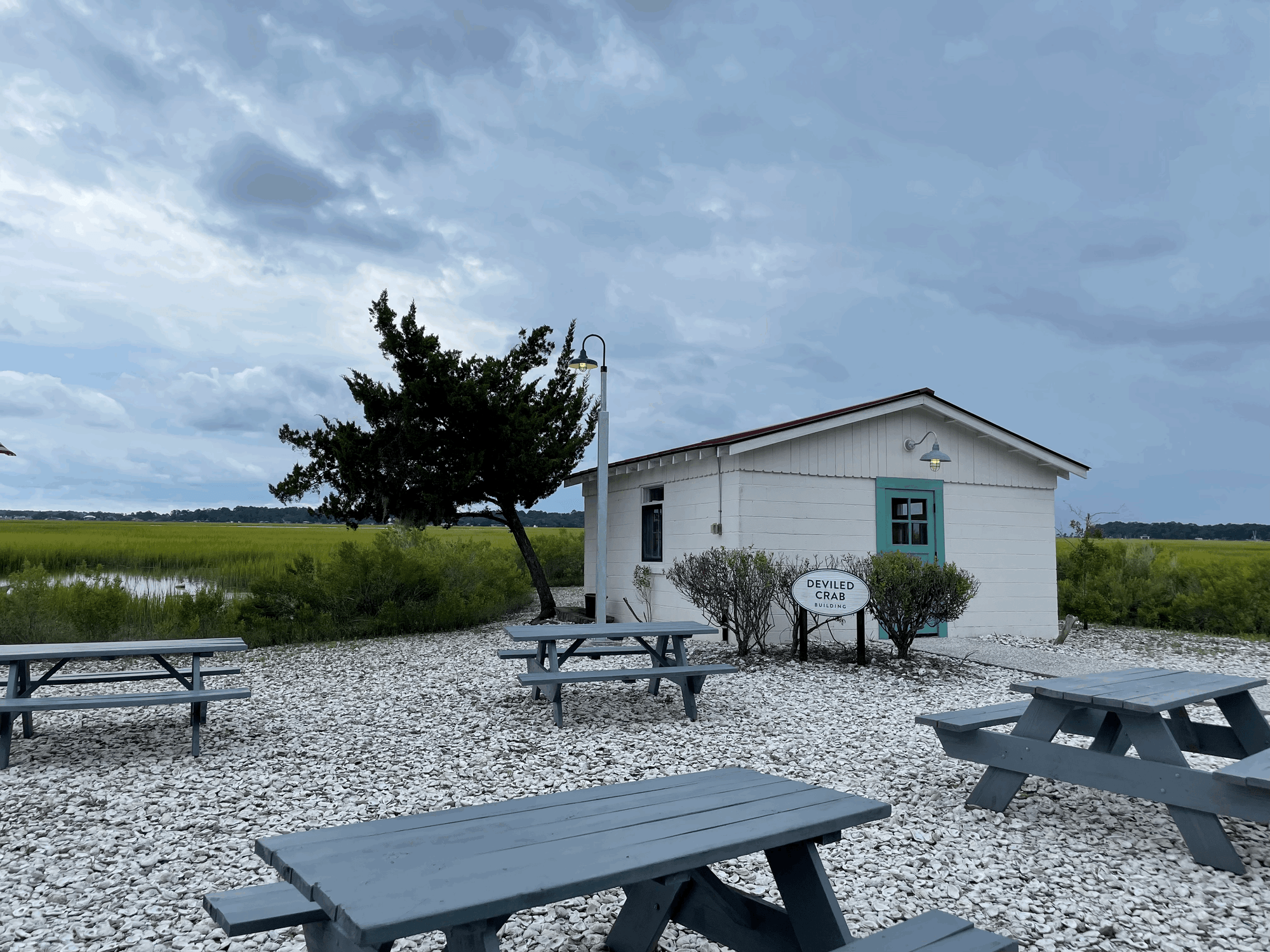
Wormsloe Historic Site is also about five minutes from the park. I have to confess I was a little disappointed when I finally visited here. The allée of live oaks is so often photographed, it's probably inevitable that the real place would seem somehow less than the image in my mind. I did notice that young trees have been planted along the row so that visitors a hundred years from now will still be able to enjoy this view! Other than that, I think this would be a good introduction to Georgia history or a place for a nice picnic, but for me it was a fairly short stop. I imagine if this is your first visit to Georgia or the Deep South, you may want to spend more time exploring the ruins here.
Even closer to the Skidaway campground, the UGA Aquarium is a good way to learn about the ecosystem around you. It's great for kids, but I enjoyed walking around here with my 21-year-old daughter, too. When we visited it was a July afternoon so we skipped the nature trail, but if you were here earlier in the day or a season other than high summer that would be interesting too I'm sure.
If you want to visit the beach while camping at Skidaway, Tybee Island is about an hour from the park. There is a campground on Tybee, and we have reservations to stay there for the first time this summer because as much as I love Skidaway, it isn't terribly convenient for the beach. (We're combining the trip to Tybee with a trip to Hunting Island in South Carolina for a few nights around the new moon. Hunting Island is supposed to have amazing views of the Milky Way on dark nights, so here's hoping for clear skies.)
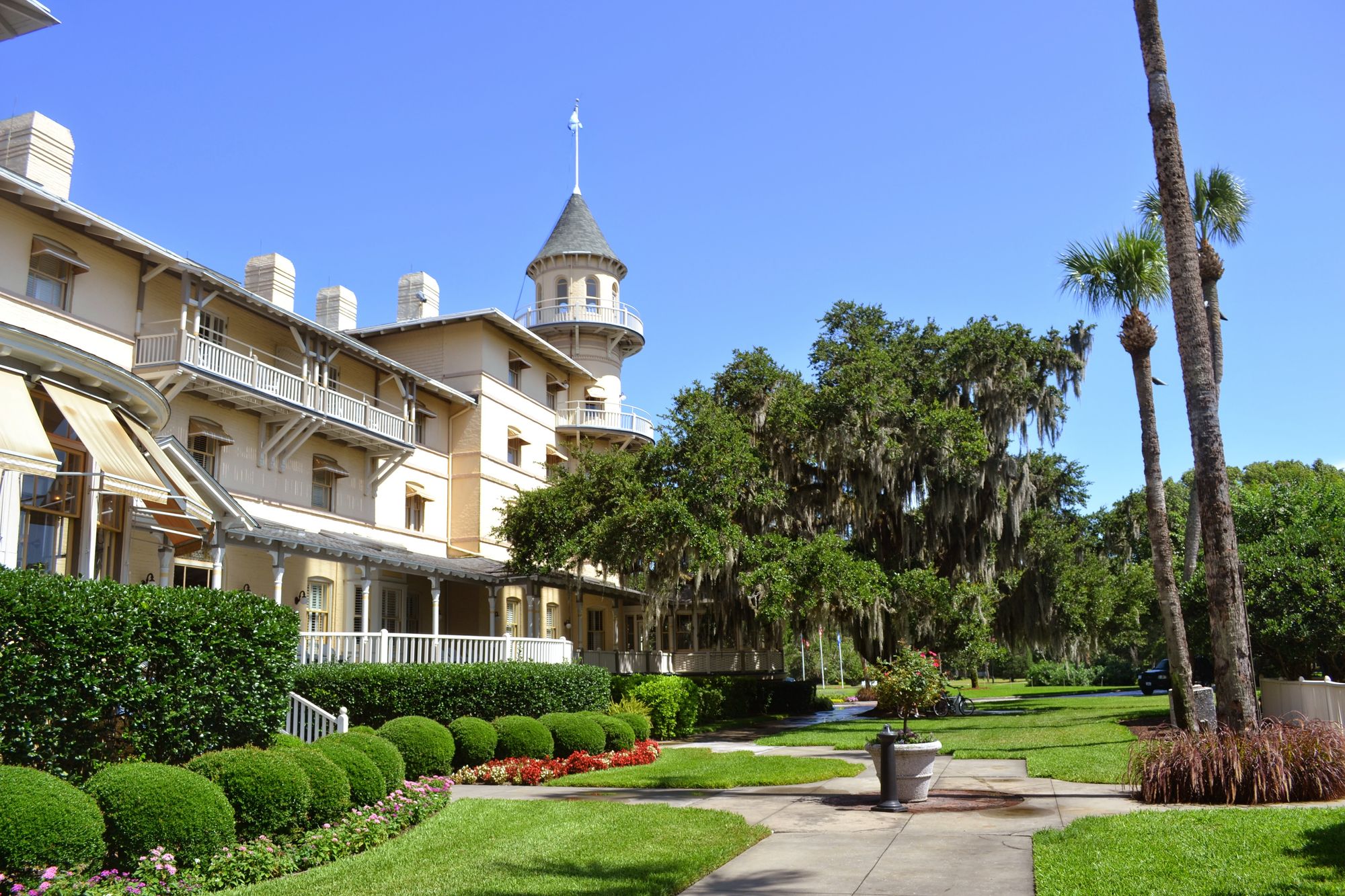
An hour south of Savannah, Jekyll Island is world unto itself. Like other Georgia islands, Jekyll was once the exclusive preserve of the very wealthy and powerful. Of the four so-called "Golden Isles" of Georgia, only two, St. Simons and Jekyll, are publicly accessible. (The others, Sea Island and Little St. Simons, can be visited if you are a paying guest or club member.)
The Jekyll Island Club (founded for families like the Rockefellers and Morgans) is still there, preserving an air of ease and beauty for its visitors, but the company sold the island to the state of Georgia in 1947. Now the island is managed by the Jekyll Island Authority for the enjoyment of the people of Georgia and the protection of the natural environment. This state agency is supposed to ensure that development remains limited and that regular Georgians aren't priced out of visiting the island. The Jekyll Island Campground with 179 sites spread over 18 acres part of that mission. One hundred sixty-seven of the sites are full hook-up sites (which start at $51/night). The 12 primitive tent sites start at $36/night. This is a big campground, but we didn't feel crowded.
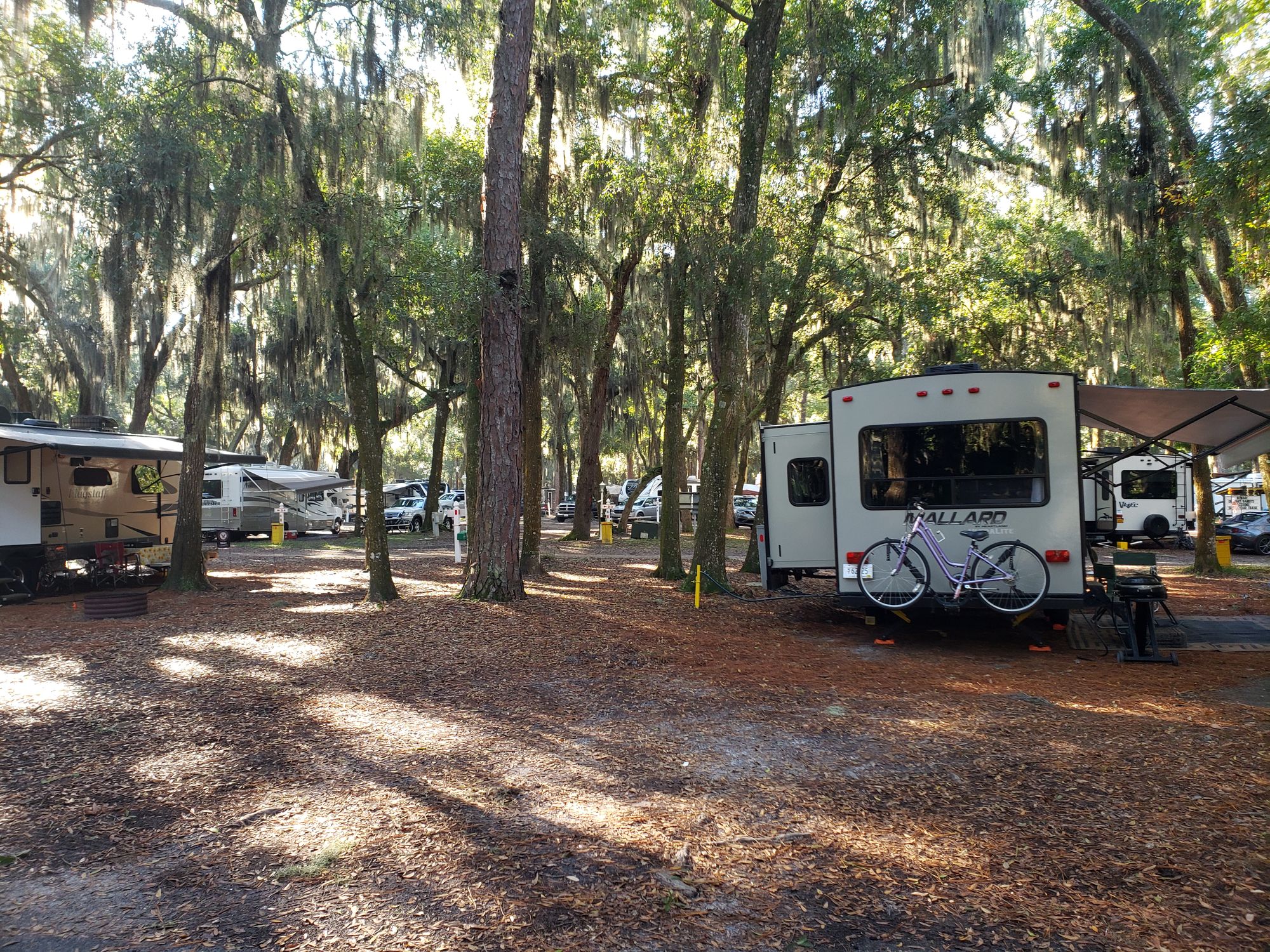
We go to Jekyll for the natural beauty and the charm of the Historic District. But even in the Historic District, there is more to see than just the charming buildings. The Georgia Sea Turtle Center rehabilitates sea turtles and land tortoises and offers a number of interesting programs to educate all of us about these creatures. The Historic District surrounds the Jekyll Island Club. If you like historic buildings, you can spend a whole day in this part of the island. We like to stop into the Club for a drink or a meal while we are there.
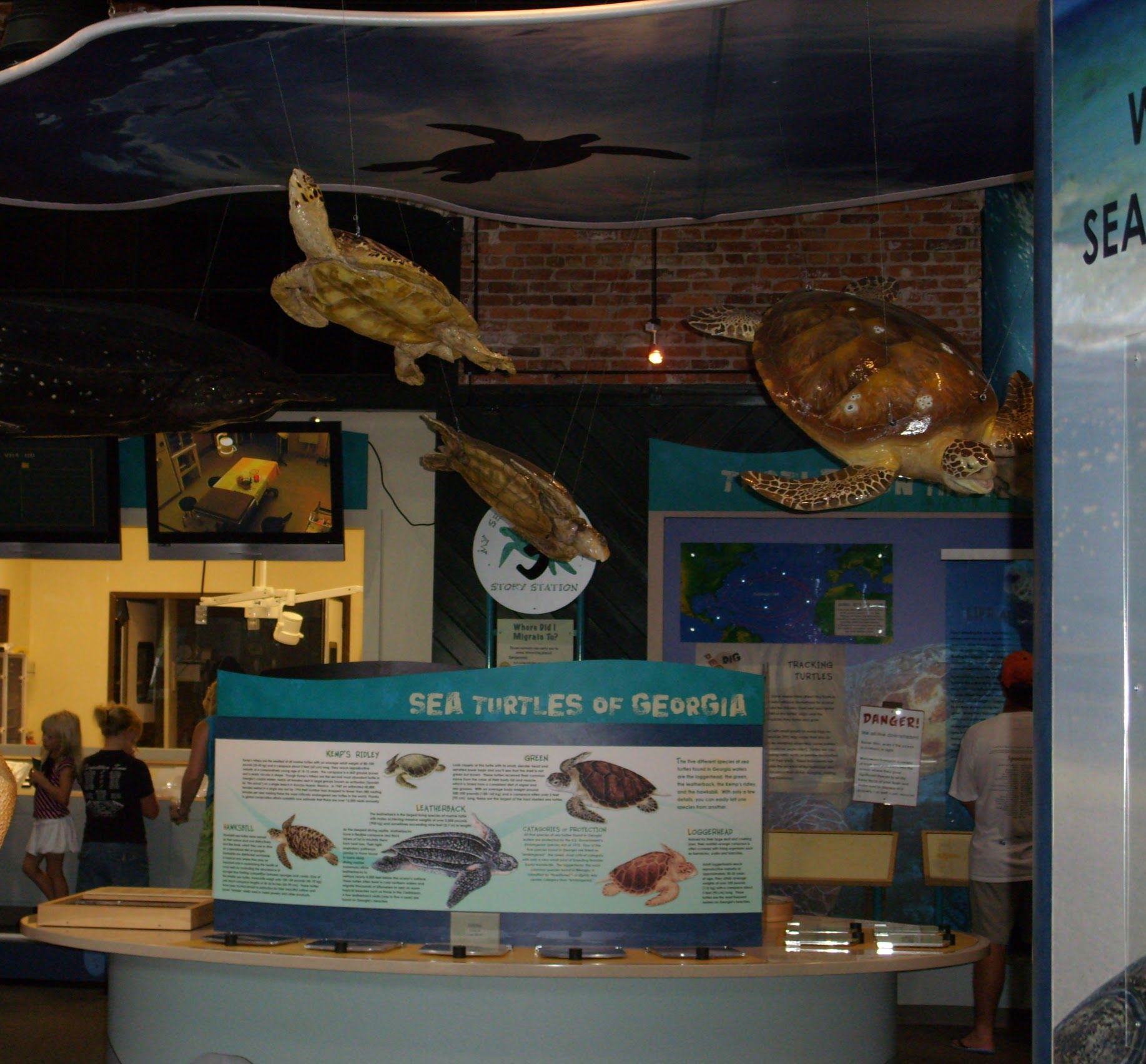
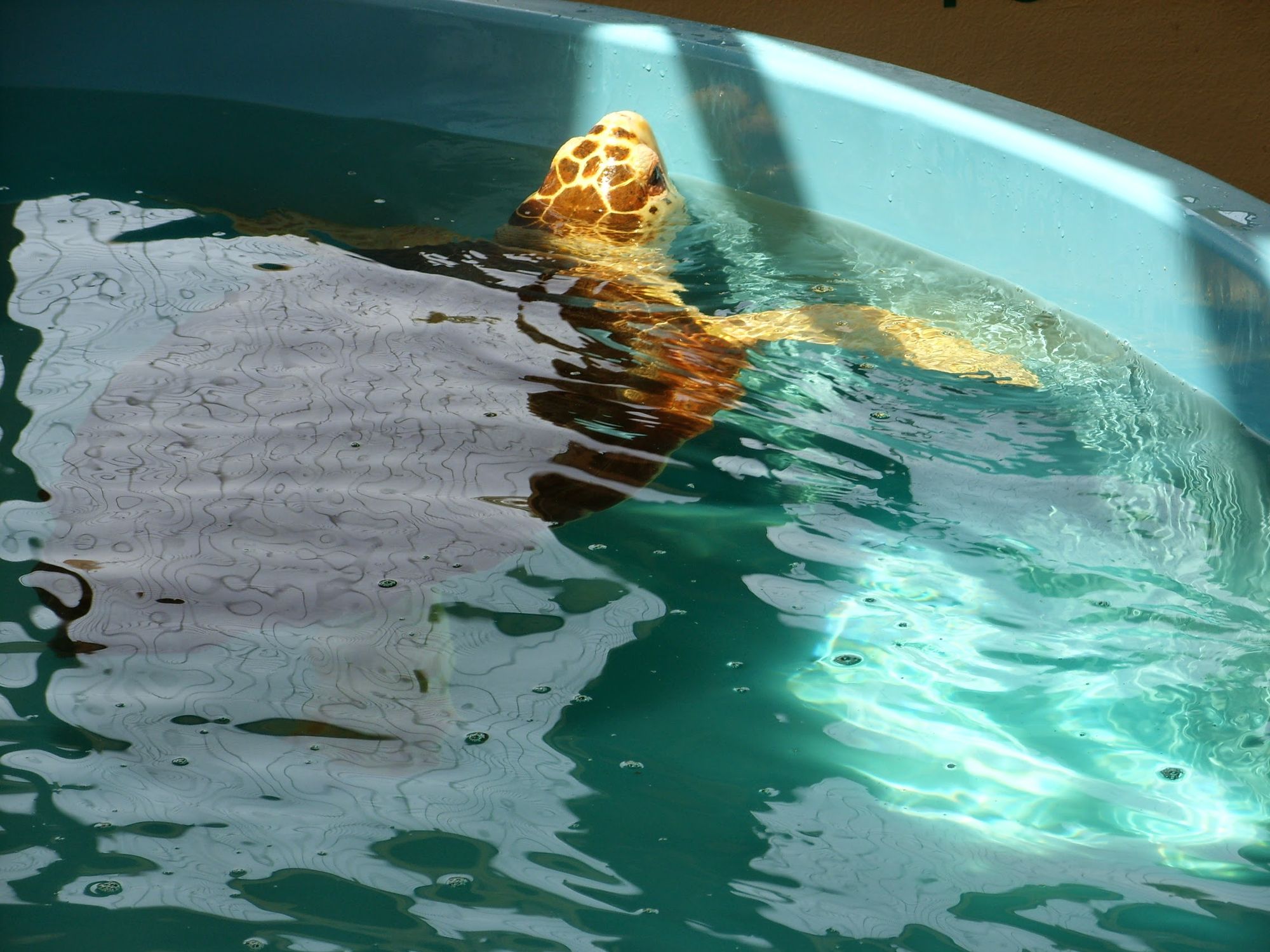
The other commercially developed area on Jekyll is the Beach Village--with the several modern hotels and a Convention Center anchoring a small shopping center with a selection of shops and restaurants. We stopped here for a bite when we were biking around the island.
Which reminds me, Jekyll is a great place to get around by bicycle. There are 22 miles of bike trails that connect everything on the island.
Development on Jekyll is strictly limited so there are many opportunities to see unspoiled coastal beauty here. I love to watch the shore birds. This is also the only place I've ever seen a mink in the wild. (I'm not sure I've ever seen one in capitivity so it may be the only one I've ever seen!) Some beautiful spots like the fishing pier are very lightly developed to give us access to the water and woods without too much disturbance.
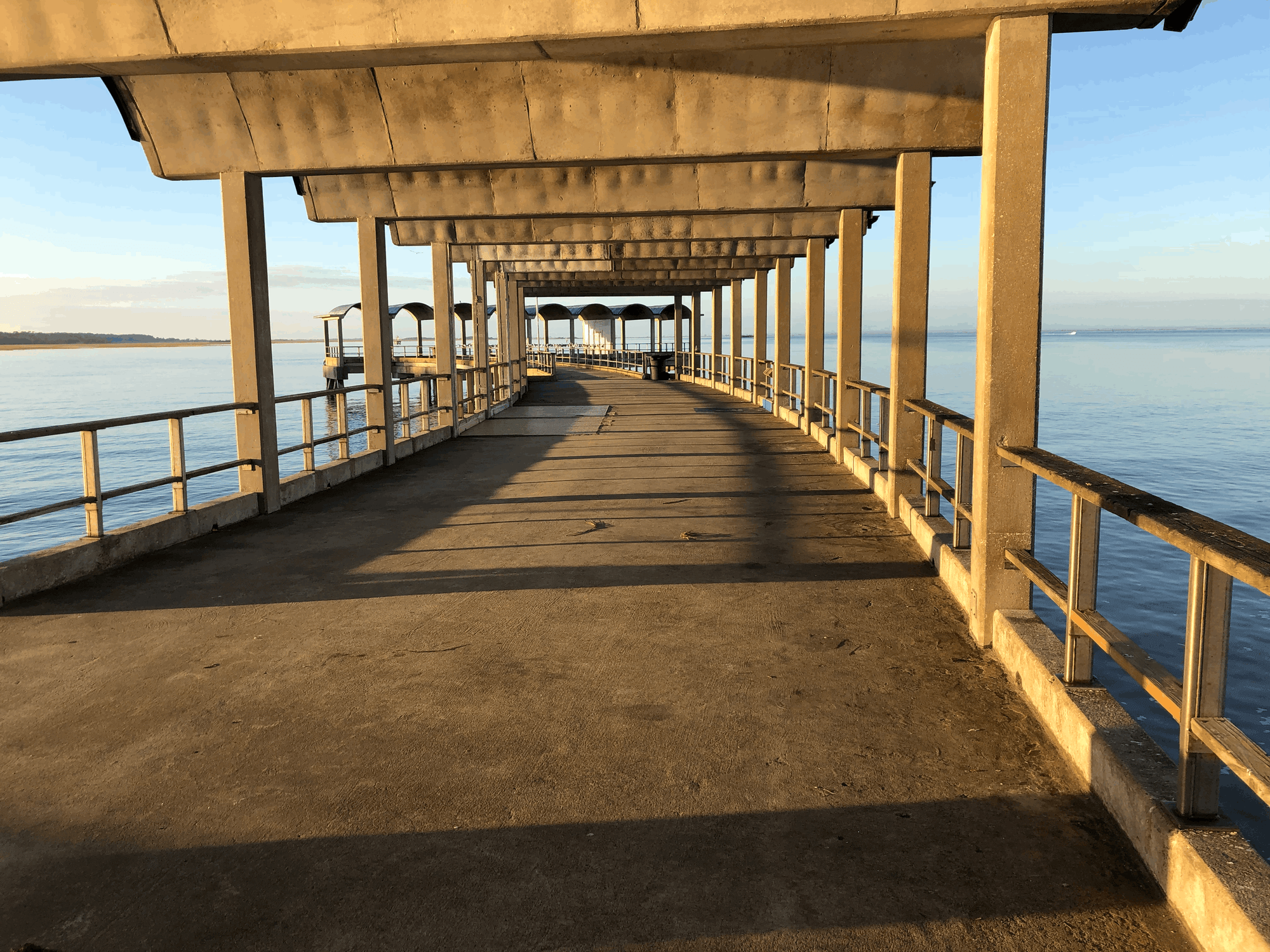
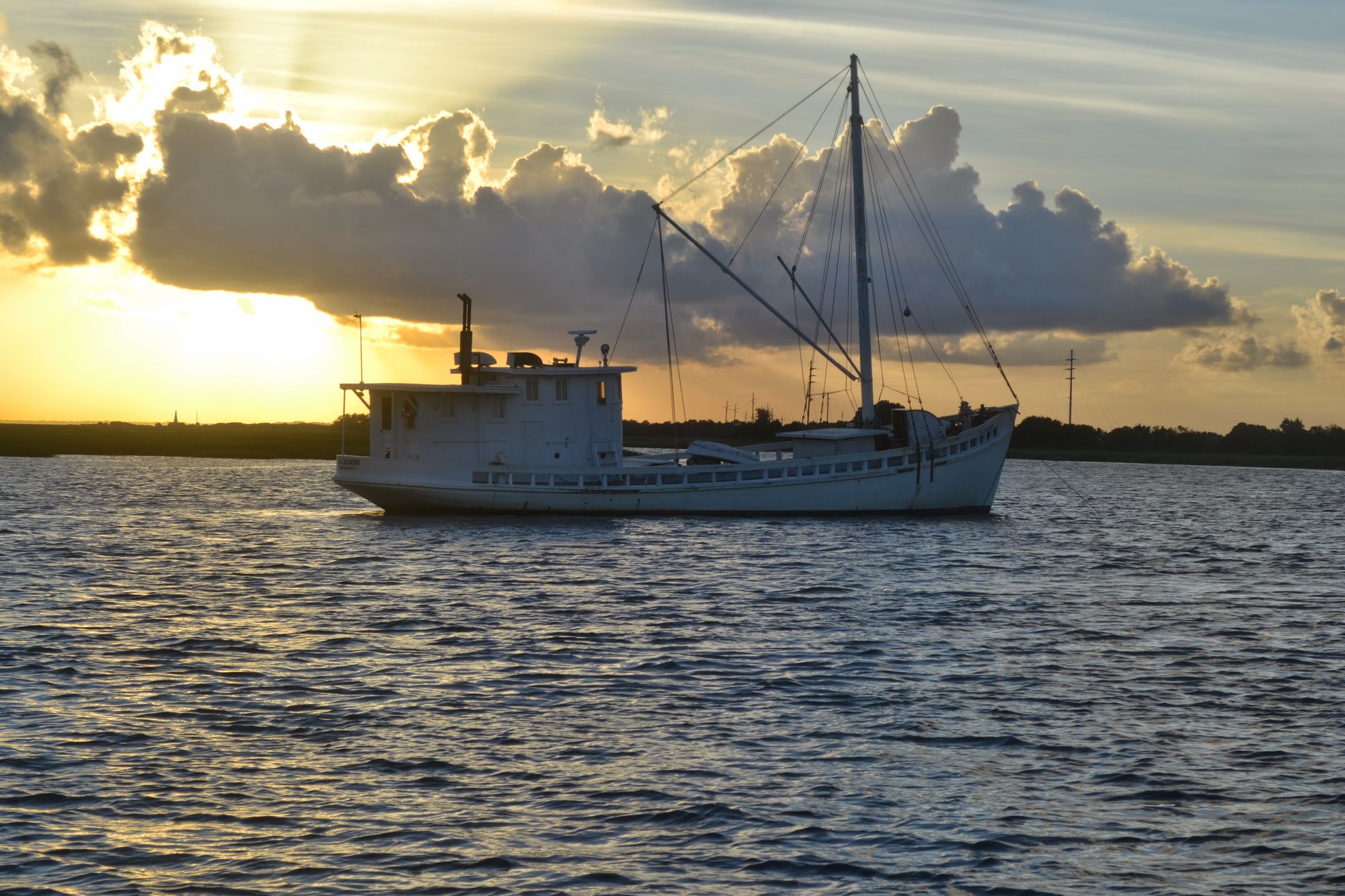
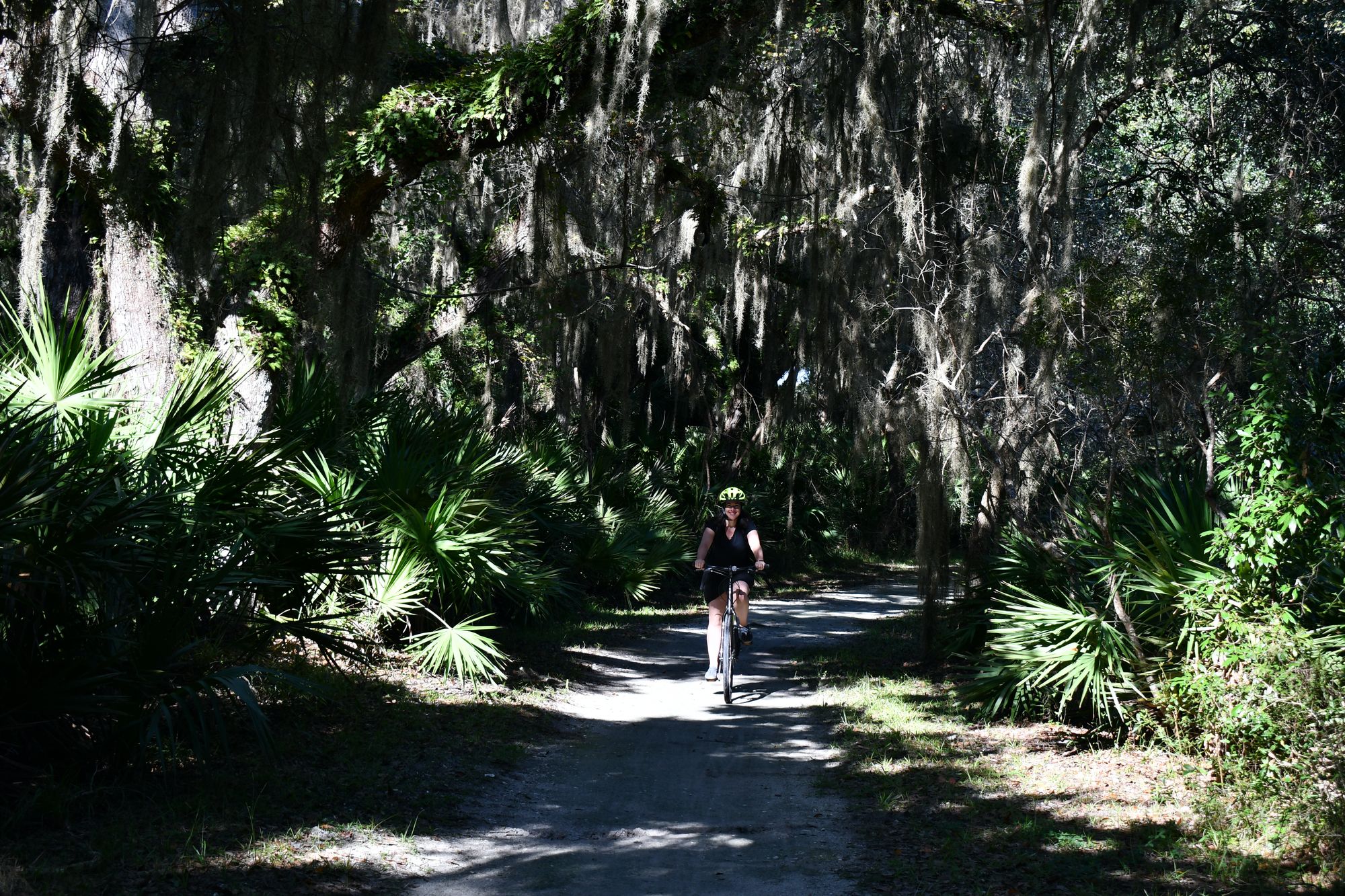
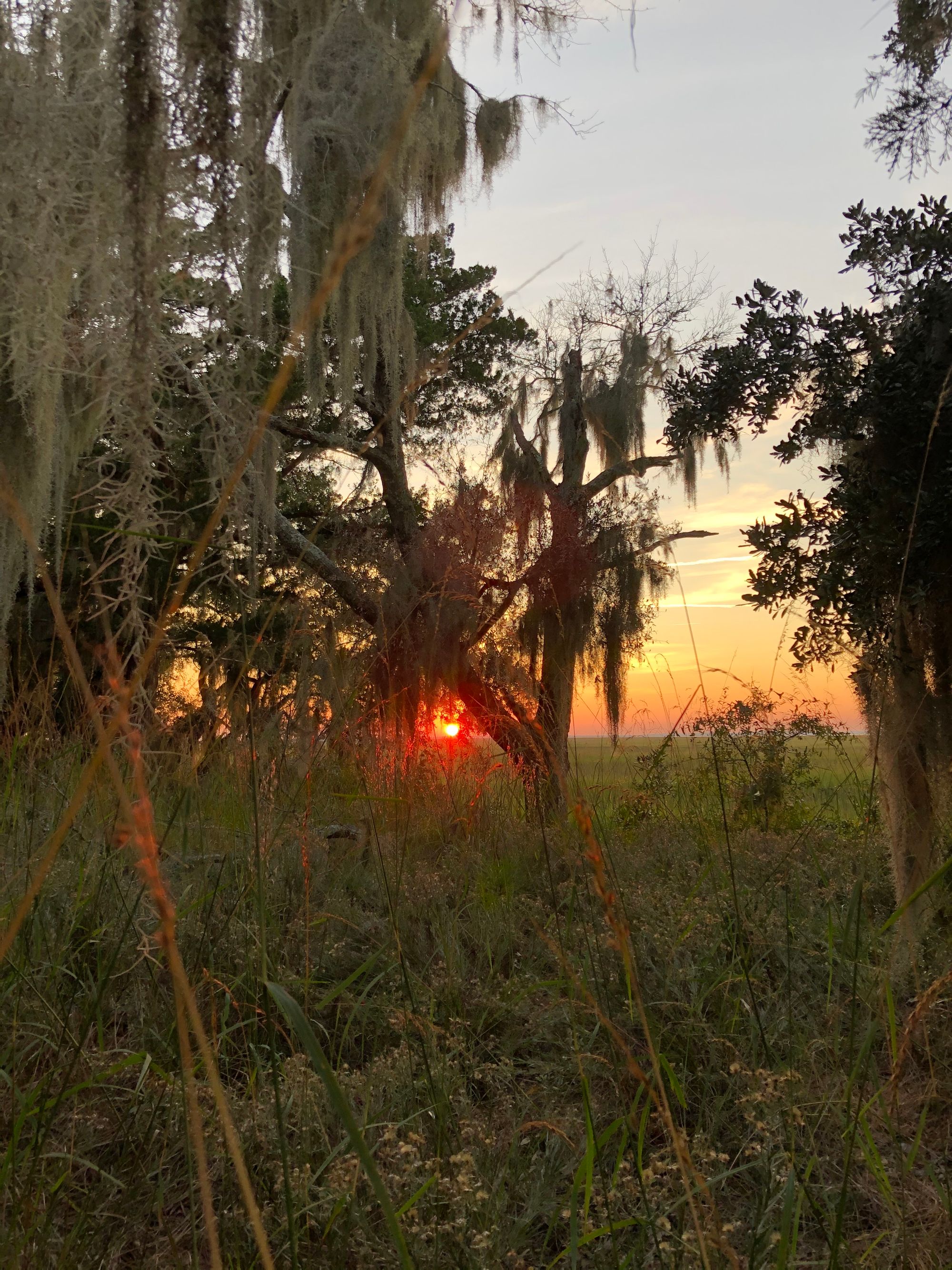
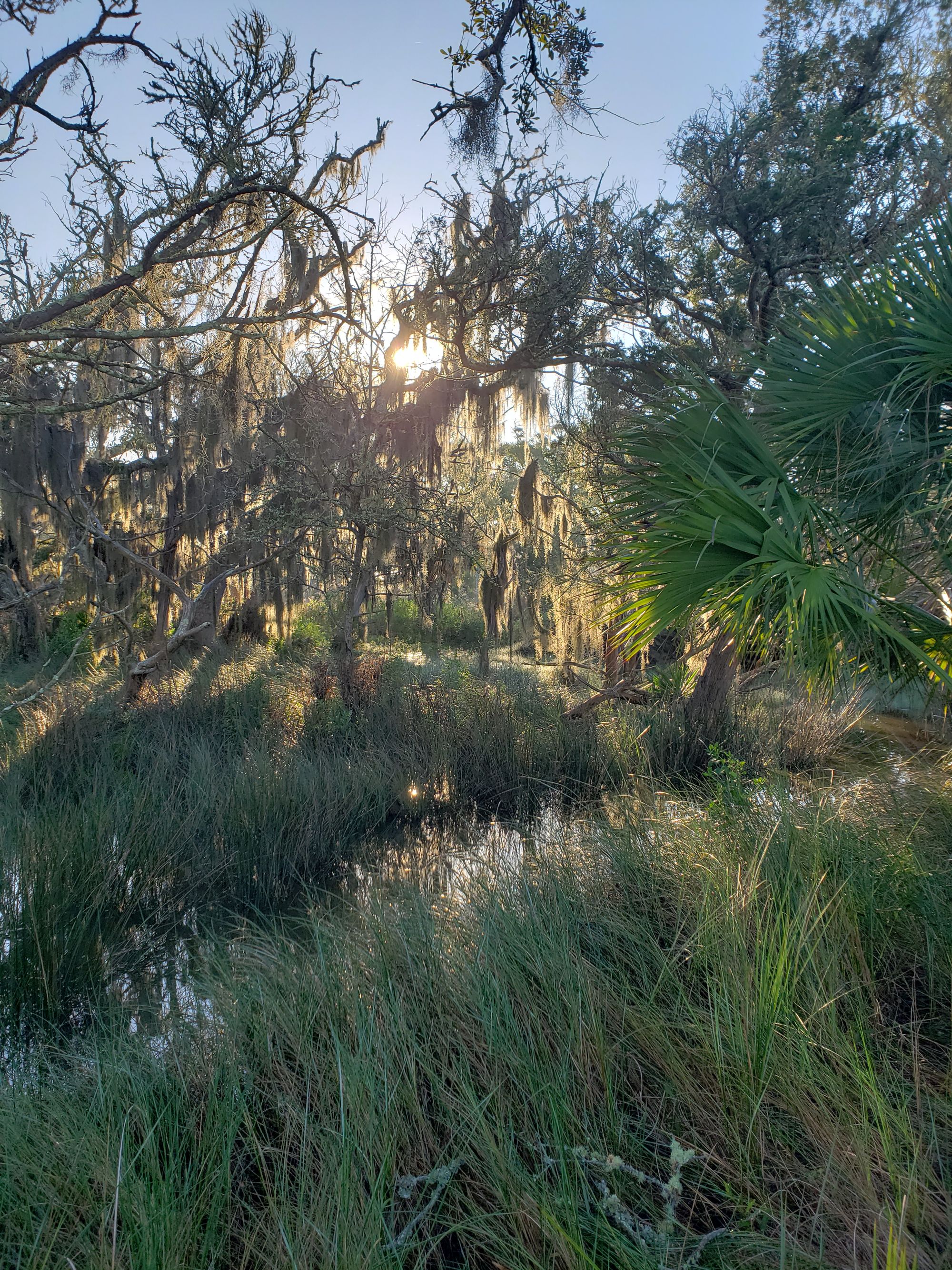
Jekyll has a variety of beaches. Some, like Great Dunes Beach Park and Ocean View Beach Park are good for a typical day at the beach. But my favorites are the wilder beaches--like the famous Driftwood Beach and the less well-known St. Andrews Beach.
I could happily spend a week on Jekyll. If I was here for a week I would go visit St. Simons as well for the shops and restaurants.
You need a pass to drive across the causeway onto the island. These can be purchased online before you arrive. Once on the island, there is no need to leave but you can get to St. Simons pretty quickly.
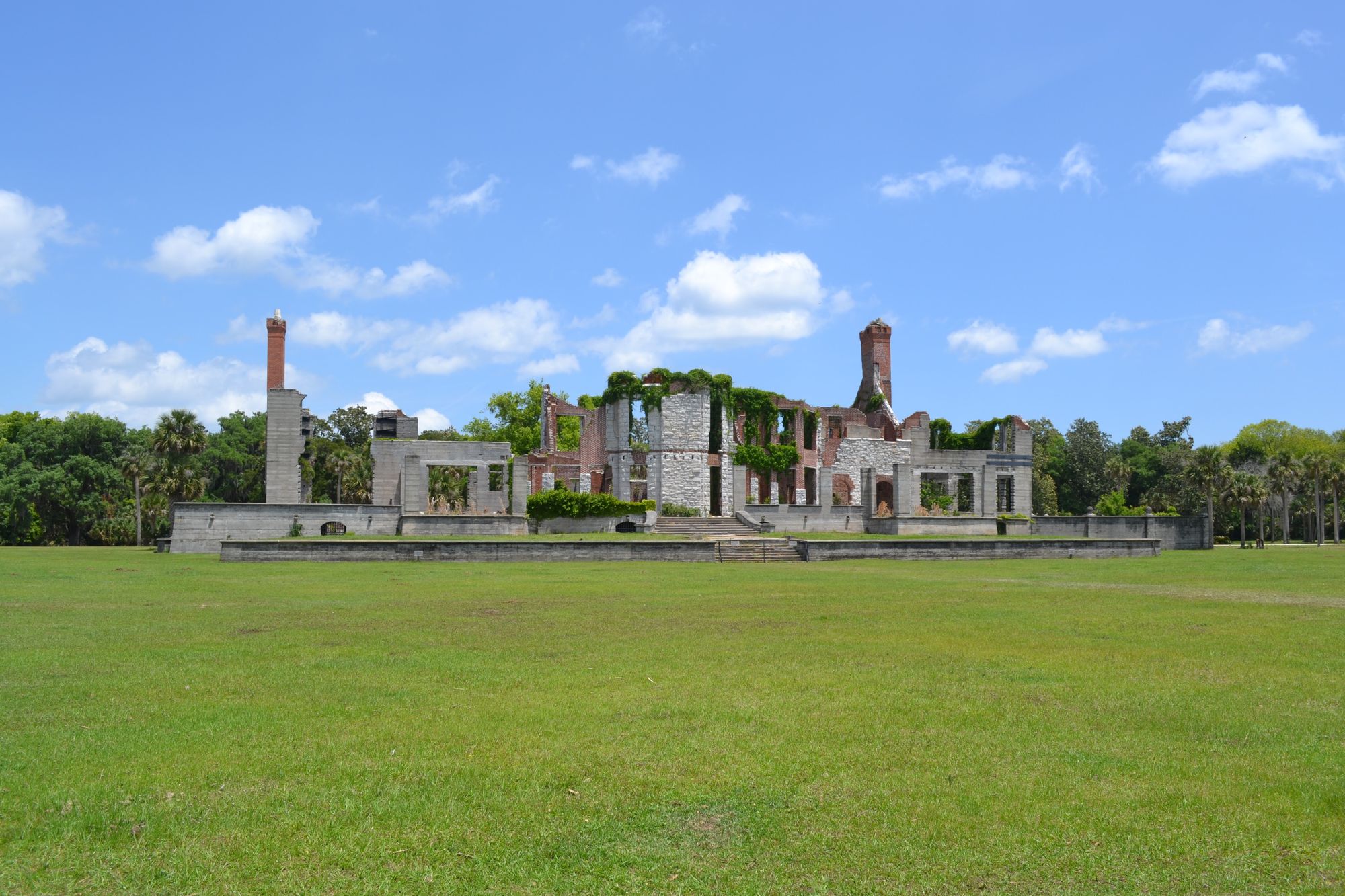
The ultimate coastal Georgia camping locations are the campgrounds on Cumberland Island. The island, reachable only by boat, has tent sites only. Some are back country sites, but there is a developed campground at Sea Camp. You must bring all of your food and supplies with you. It's 1/2 mile from the ferry dock to Sea Camp but you can rent carts to carry your supplies to the campground if you aren't backpacking.
We have only camped at Sea Camp. There are cold showers and bathrooms here. If you want to visit Cumberland Island National Seashore, but camp in an RV, you can camp at Crooked River State Park near St. Mary's, Georgia and take the passenger ferry over for a day trip. We have only stayed in a cabin at Crooked River but the reviews I read of the campground there are positive.
Cumberland, a long-time retreat for a branch of the Carnegie family, was almost developed by the same person who developed Hilton Head island just up the coast, but Georgia environmentalists fought successfully to prevent the development and pressured the developer to sell his holdings to the National Parks Foundation.
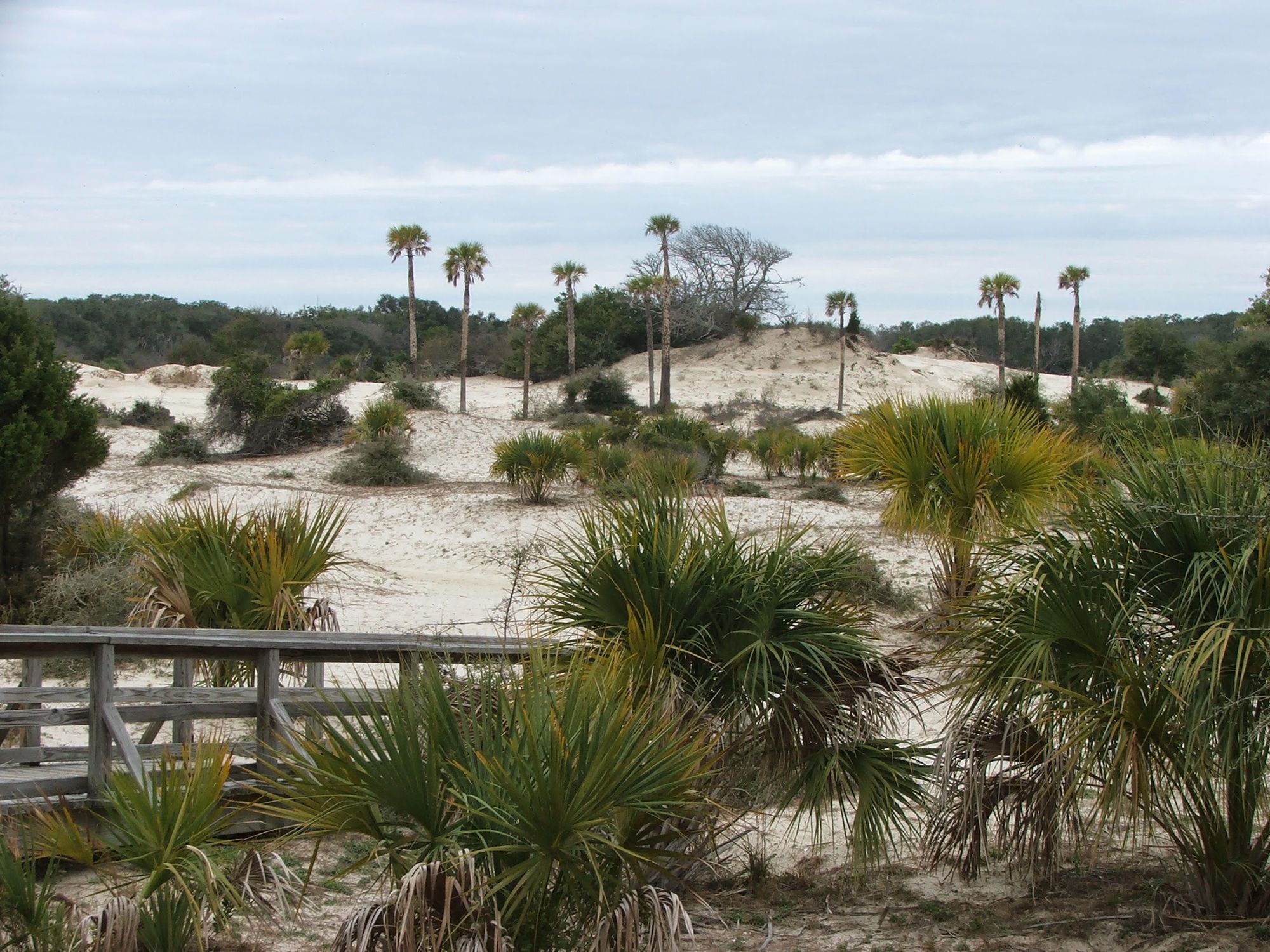
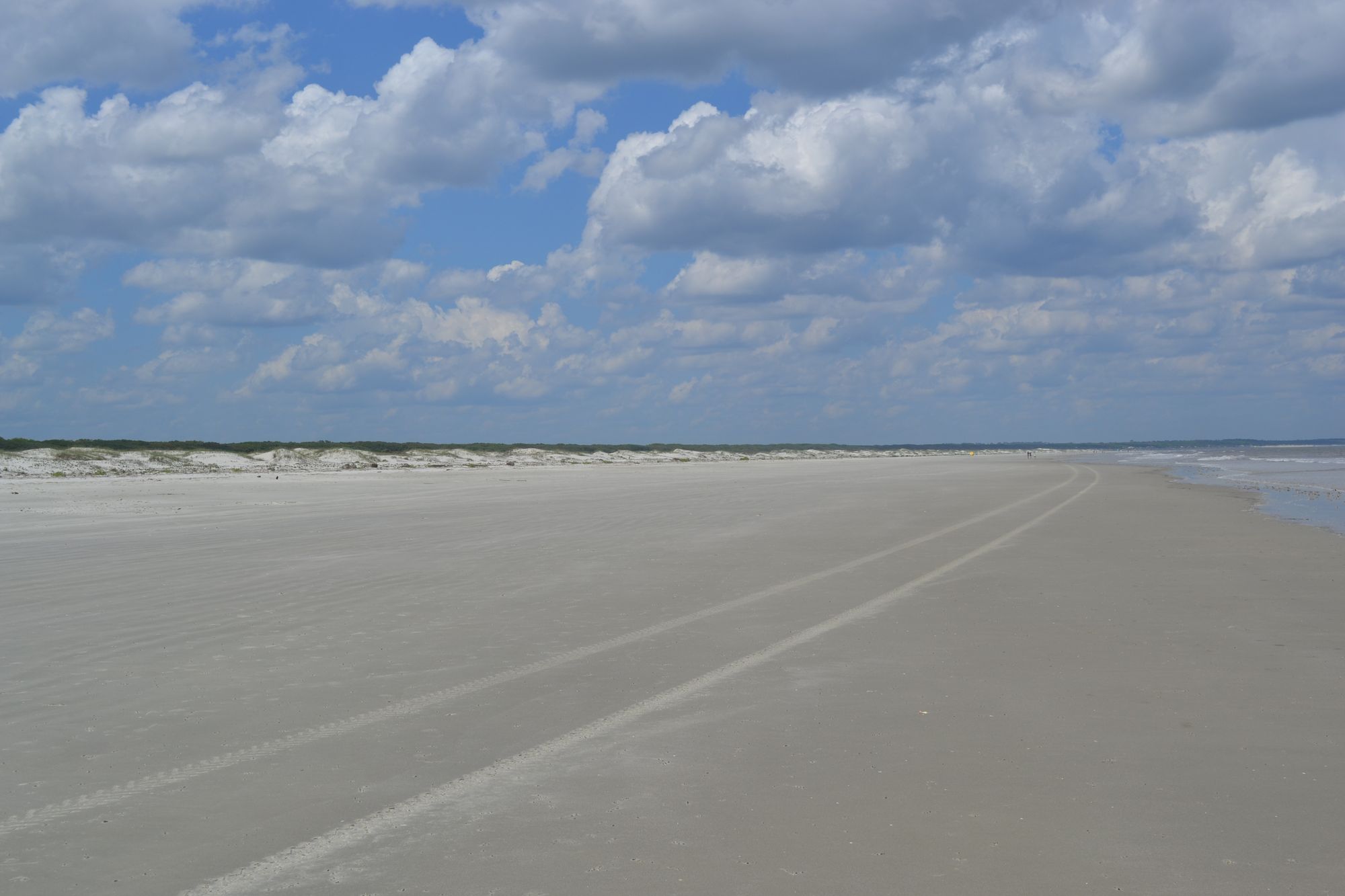
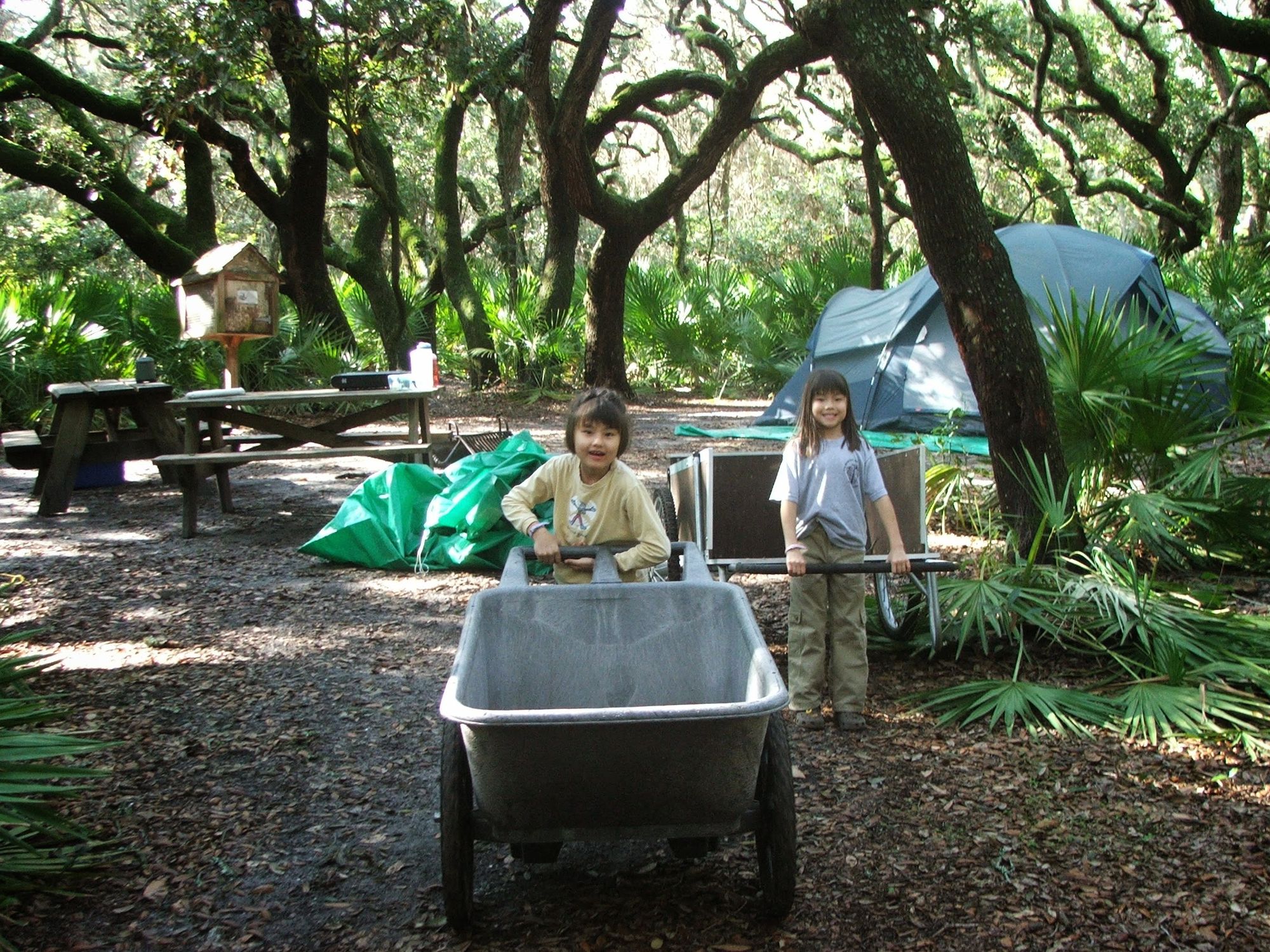
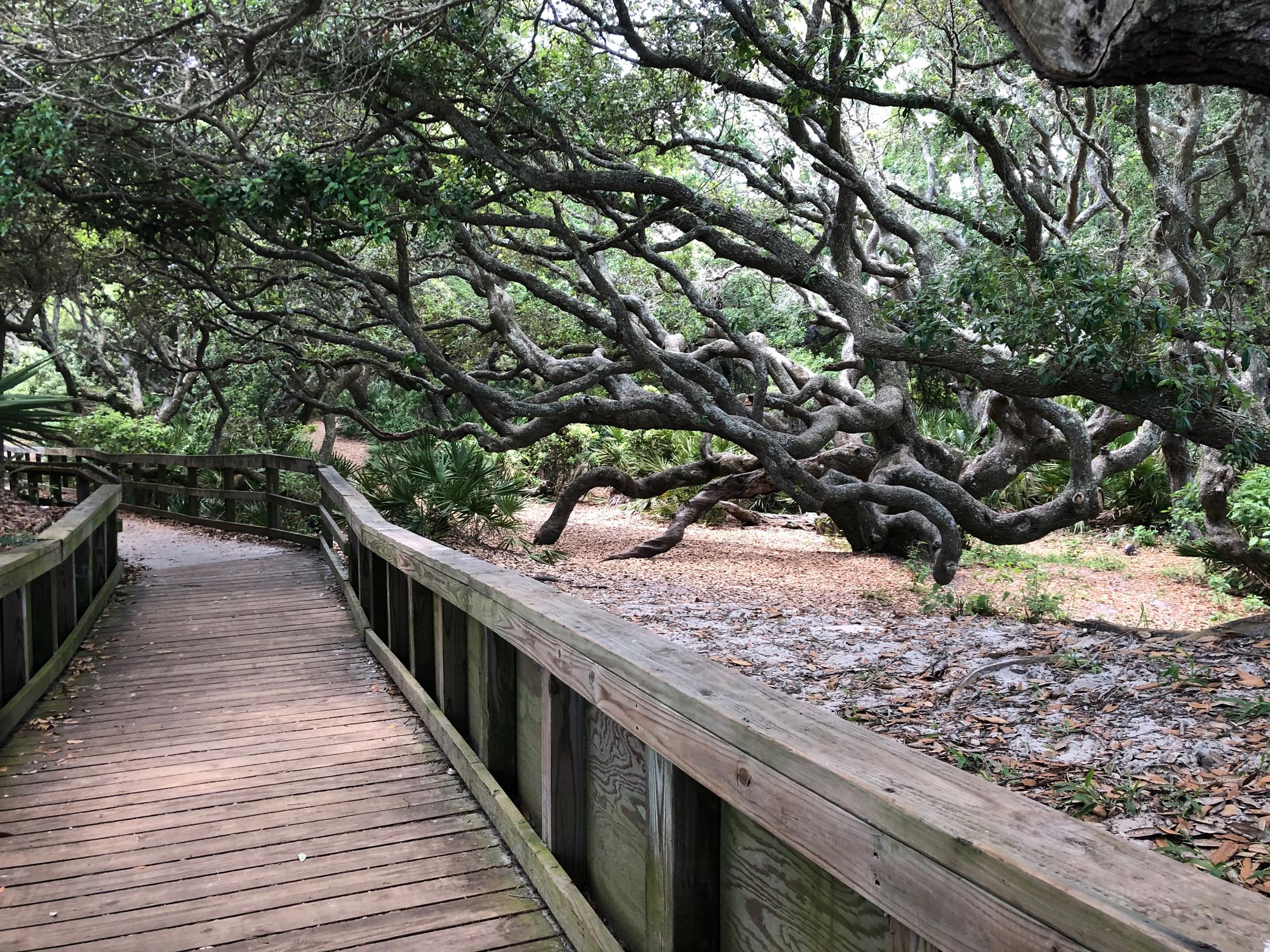
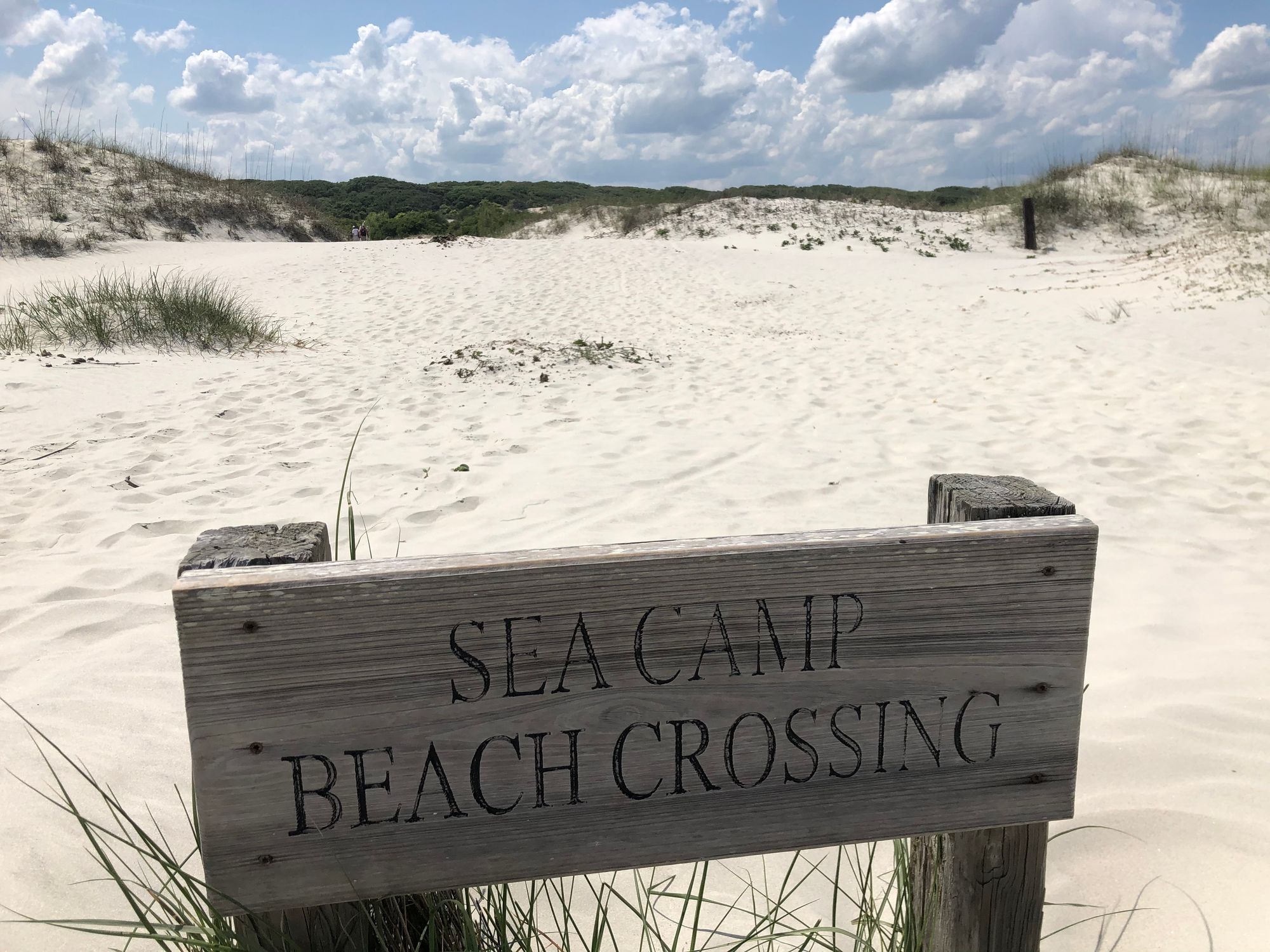

As wild and beautiful as Cumberland is, part of what makes it so enchanting are the remnants of a time when more people lived on Cumberland. The ruins of Lucy Carnegie's mansion, Dungeness, and the self-contained society that supported the Carnegie estate add a Romantic melancholy to the island landscape. The wild horses that run free on the island are controversial, but I can't ever forget how magical it was to share the beach with a herd of these horses on a hot day. They were clearly enjoying splashing in the water as much as we were. On the north end of the island, the buildings like the First African Baptist Church remain from a settlement of freed slaves and their descendants.
Most of the island is public land now, but there are still a few private landowners. Some have agreed that their land will become public upon the death of the current owner, but Greyfield Inn, a luxurious getaway owned by Carnegie descendants, will continue to be owned privately for the foreseeable future.
Being on Cumberland is the activity here. The island can be enjoyed by bike or on foot. One outfitter is allowed to operate tours where they can drive the 30 miles round trip from Sea Camp docks to the settlement on the north end. National park rangers give interesting free talks about a variety of subjects as well. Birdwatching here is superb. There is a seven day limit on stays in the campgrounds.
Georgia's coast is remarkably unspoiled. It is not completely pristine, but for the East Coast it is unusually well-protected. While in part this protection is thanks to the exclusivity that marked land ownership and access here until the mid-2oth century, now we can all enjoy this special coastline in places like Skidaway, Jekyll and Cumberland.
When to go:
Because we are usually in our camper, we camp on the coast year-round, but if you are tent camping, I would recommend visiting in the fall (October-mid December) or spring (late February through early April). Summer will be brutally hot, muggy and full of biting insects even at night unless you can get a sea breeze. If you are tent camping and can only travel June through August, Cumberland and Jekyll Islands would still be worth it, but I'd skip Skidaway. Winter is more of a gamble. You may have pleasant weather anywhere along the coast, or you may be shivering through a cold snap. The coldest camping trip we ever took was on Cumberland Island during an unusally bad cold snap, but even in 20 degree weather I was glad to be there.
